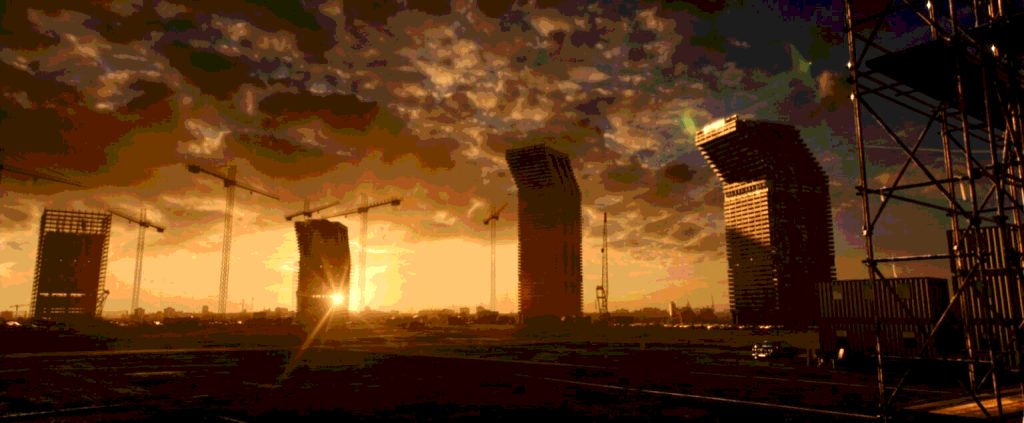
The Stirrer
I’ve been banging on about 15 minute cities for a while but until now, there’s one aspect of the implementation of the concept that I haven’t dealt with, namely the role of high rise apartment blocks. I’m going to start the process of addressing that in this piece which is more of an introduction than a deep dive. While it may be hard to get some people who should know better to see the coercive control agenda lurking in the background when technology is brought in the implement so called ‘liveable neighbourhoods’, hopefully, they’ll see the blatant possibilities of control that are inherent in high rise living. If they don’t, then we’re well and truly lost. Before I get onto this, I want to add some context. That being what I’ve had to say in the recent past about the adverse impact of high rise apartment blocks.
When I was living back in Essex, I wrote a few pieces about the threat posed to a number of town centres by high rise apartment developments. The town centres in question were Basildon, Grays and Romford. For readers who are not familiar with the part of Essex I used to live in, here’s some very brief explanatory context:
- Basildon is a new town, the construction of which started in the 1950s – the town centre was mostly built in the 1960s.
- Grays is a post industrial town on the banks of the Thames Estuary that’s reinvented itself as a commuter town because of it’s rail links to London.
- Romford is a commuter town on the eastern fringes of London with a fast rail link into the capital so, it always was going to be a prime target for the apartment developers.
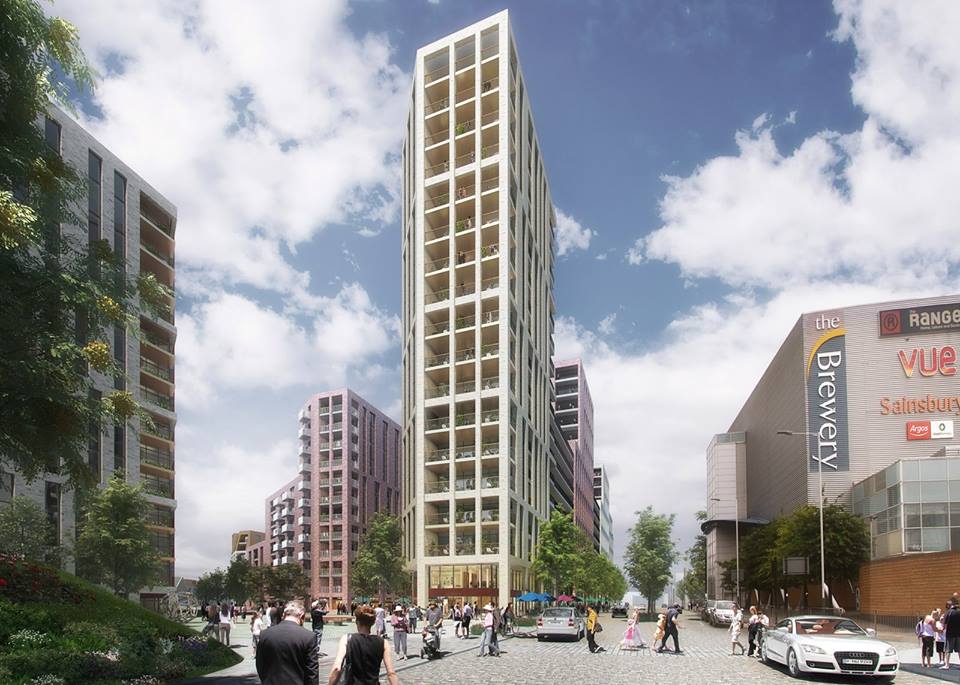
Here are the pieces I wrote, along with salient quotes from each one that will hopefully give you an idea of where I’m coming from on the issues surrounding high rise living:
High rise towers spreading like an unwanted rash 15.11.21
Basically, if all of this goes ahead, there won’t be much of the existing town centre of Grays left standing. As with Basildon and Romford, the vast majority of these apartments will be either for sale or rent. They’re aimed at relatively affluent commuters working in London. This proposal does nothing to alleviate the housing shortage for residents of Thurrock. With the train journey into Fenchurch Street taking just over half an hour, it’s not surprising that developers are salivating at the prospect of tapping into that market. What these developments represent is social cleansing in the name of so called ‘regeneration’.
Grays has developed into a needs based shopping centre that serves a pretty diverse local community. From Morrisons on the one hand to the Eastern European and Turkish run international grocers on the other, there’s a pretty wide range of food on offer.
Why the high rise towers? 31.10.21
What is slowly becoming clearer is the role of these towers in bringing about the concept of the ‘smart city’ – one of the key parts of the fourth industrial revolution a.k.a. the great reset that we’re being railroaded into. At a almost instinctive level, people are making the connections between these towers springing up everywhere and the atomising high tech future, partially embodied in the Metaverse, that we’re being told is our future. They realise that these kind of environments are not just atomising and dehumanising – they’re another layer of control and a growing number of people are starting to kick back against that. To put it bluntly, what’s on the line is what it will actually means to be human as we go into the future…
The future of Grays town centre – imposed change from above 23.8.21
To put it bluntly, what’s being lined up for Grays town centre is a project of social engineering aimed at attracting a more affluent demographic into the town. It’s the existing residents who will be paying the price for this as the shops they rely on are swept away. This may well explain why there has been minimal consultation with residents asking for their views and suggestions as to how the town centre could be improved. Because what the residents would like to see happen would not fit in with what the council or developers want to impose on the town and its people. The people need to make their voices heard in no uncertain terms…
‘Regeneration’ – the only way is up 6.10.20
What are the residents of Basildon getting? A citadel of high rise apartments, situated within easy walking distance of the railway station with frequent train services to whisk people in and out of London. A new community of commuters whose focus will be on their jobs in the capital and not on the town they live in. A high tech, high rise dormitory that will have little to do with the rest of the town. This has nothing to do with improving the lives of people across Basildon. A ‘masterplan’ that focuses almost exclusively on the town centre with little consideration as to how it relates to the rest of Basildon has to be seen for what it is – the facilitation of the wet dreams of the property developers.
High rise ‘hell towers’ popping up all over the place 8.8.20
People need room and access to greenery and nature to live properly and flourish. No matter how well appointed and digitally connected these new apartments will be, they will deprive people of what’s needed to live a decent live. This is why we’re joining the fight against having this kind of living imposed upon us.
More thoughts on the ‘masterplan’ for Basildon town centre 13.7.20
The point has been made that as we are supposedly in the age of the pandemic, with more lockdowns likely, what would life be like for residents in these towers? If as we suspect, they’re the demographic who can easily switch to working from home, providing they can get the essentials of life delivered, they’ll probably be okay. With physical distancing and masking, intentionally or not, we’re all being conditioned to get used to less in the way of meaningful, real life face to face communication and more used to interacting with each other digitally. So long as the internet and wi-fi holds out, they’ll cope. Personally speaking, this is our idea of hell…
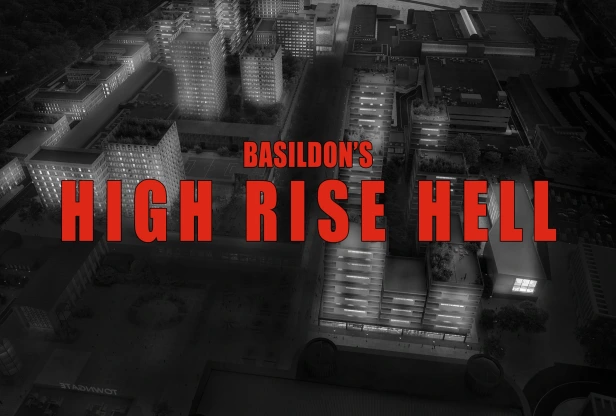
The most notorious one for me was the plan to pretty much demolish Basildon town centre and replace it with a number of high rise apartment blocks with retail provision at street level. These would be apartments aimed at young professionals who would either be commuting into London or working from home. If these blocks ever get built, it will represent a fairly significant change to the demographic of Basildon. We’re talking about some pretty serious social engineering here. The plans to completely remodel Basildon town centre were enthusiastically supported by former Labour leader of the council, Gavin Callaghan. A leader who routinely abused opponents of the plans. A leader whose rampant megalomania was up there with that of the outgoing mayor of Bristol, Marvin Rees.
The proposed development in Grays involves demolishing a fair sized chunk of what is currently a needs based shopping centre, to be replaced with a number of high rise blocks with retail space at street level. Retail space which will most likely be a fair bit pricier to rent out than the existing units. Whether the proprietors of the shops that will displaced by the development will be able to afford the rents of the new premises on offer remains to be seen. As for Romford, the high rise apartments are already sprouting up. With the Elizabeth Line now up and running, and speeding commuters into the heart of London, there’s pressure to build even more high rise apartment towers. The town I grew up in during the 1960s and 70s is becoming unrecognisable.
Moving down to near Bristol means that given the plans for high rise apartment blocks across the city, when it comes to commenting on why they’re just plain bad, it feels like I’ve been thrown out of the frying pan into a raging inferno! Here’s an idea of what’s coming:
Bristol Premier Inn could be demolished if plan approved – BBC | 20.4.23
The 10 huge tower blocks that could change Bristol’s skyline forever – Carrington Walker | Bristol World | 18.4.23
Plan for tallest building in city’s history is ‘assault on Bristol’ – Tristan Cork | Bristol Post | 28.11.22
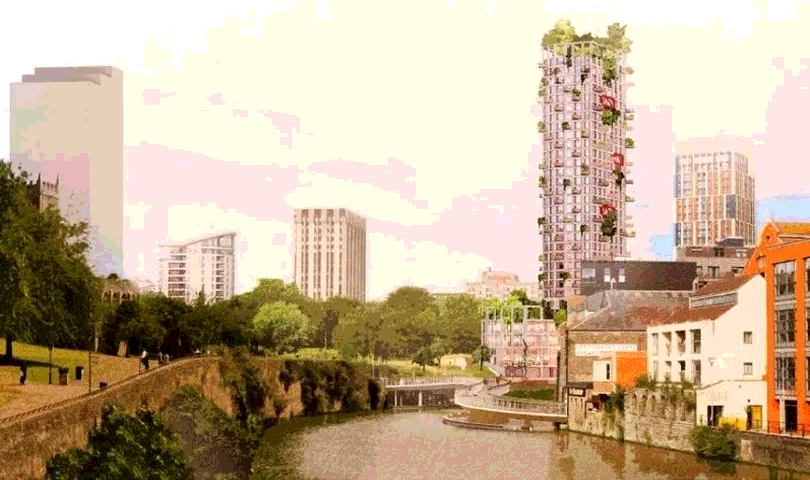
Just what the f**k is it with megalomaniac council leaders and supporting the construction of high rise apartment blocks! Are they some sort of virility symbol, with more blocks going up conferring greater status! On a more sinister note, is it because people piled on top of each other in an apartment block are easier to control and manipulate?
Most of the pieces I wrote about the high rise apartment towers proposed for Basildon, Grays and Romford were written in 2020/21. This was at the height of the Covid ‘crisis’ lockdowns and my critique focused on how easy it could be to control the movements of the residents of these blocks in any ’emergency’ situation. At that point, I hadn’t really started to think that much about the concept of 15 minute cities. As regular readers of my blogs will be only too well aware, I’ve been doing a lot of thinking and writing about 15 minute cities over the last year!
There’s 15 minute neighbourhoods where a lot of what you need is within a short walk but, as things stand at the moment, you’re still free to come and go as you please. That pretty much describes my personal situation in Keynsham where I can walk to the shops I need, walk to the football club I now follow, walk to our adopted local pub on the banks of the Avon, walk to the railway station and get trains to Bristol, Bath and beyond and, last but by no means least, I can walk into the surrounding countryside. This is a million miles away from the high rise hell that will be deployed to bring about dystopian 15 minute cities where it’s easy for the authorities to monitor and control what we do.
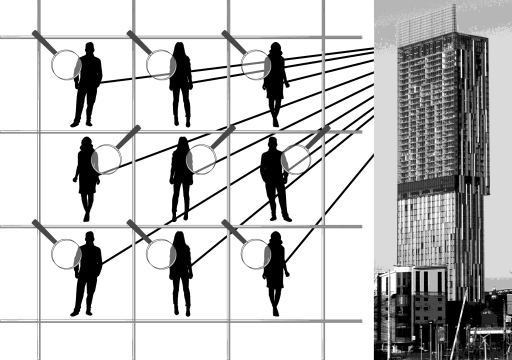
I’m talking about the high rise apartments going up in Bristol aimed at young professionals, a fair few of who could well be working from home for at least some of the week. They may venture down to street level to get a coffee or into the neighbouring streets to get some food but by and large, they won’t be going very far. With the sickening BT ad campaign celebrating ‘winning at staying in’, you can’t help feeling a growing sense of dread at what our cities are going to become. High rise apartment dwellers who work from home and can meet most of their needs from shops and cafes in the neighbouring streets won’t be travelling a lot. I suspect that a fair few of them would actually support the kind of restrictions on movement that are being talked about in some circles in the futile bid to reach the net zero carbon emissions target. ‘We are all just prisoners here, of our own device’ and all that. Rattling round a tower block and a few neighbouring streets, glued to the screen both for work and entertainment isn’t going to be much of a life is it? Even the boosters who like the concept of the so called ‘smart city’ have reservations about the social and economic value of high rise living:
7 Reasons Why High-Rises Kill Livability – Bloomingrock | Smart Cities Dive
Living in a high-rise creates a very finite and encapsulated world in and of itself. The high-rise becomes your world, especially those which include a restaurant, market, gym and other amenities. You never have to go outside or encounter other people. Plus, this phenomenon creates the opposite effect of public spaces. It ensures that people mostly interface with others of the same socioeconomic strata. High-rises literally create silos, both physical, social and psychological.
To be brutally honest, it’s a recipe for stress and mental illness. While we humans are social beings, we were never meant to live cheek by jowl, packed in on top of each other, semi-permanently glued to a screen. We sure as heck were never meant to live in high rise hell towers, cut off from any meaningful contact with nature. One of the objections to the rash of high rise apartment towers proposed for Bristol is that they will start to block out the views of the green hills surrounding the city, particularly those to the south. Mind you, maybe that’s what the bastards want, cutting us off even further from nature and forcing us to focus even more on the screens that dominate and control our lives. Because when you’re wandering through Leigh Woods soaking in the sights and sounds of nature, you’re outside the control matrix that they want you in. That would never do, would it?

Cramming people in together like this is not going to end well. If living in high rise apartment blocks was something that we as humans are supposed to do, then why do these towers inspire some pretty dystopian writing? One classic example of this genre of writing was gifted to us by the late J.G. Ballard, a writer who had an unnerving knack of calling out what we have later come to experience:
“All the evidence over several decades cast a critical light on the high-rise as a viable social structure, but cost-effectiveness in the area of public housing and the profitability in the private sector kept pushing these vertical townships into the sky, against the real needs of their occupants. The psychology of high-rise life had been exposed with damaging results. Living in high-rises required a special type of behavior, one that was acquiescent, restrained, even perhaps slightly mad. A psychotic would have a ball here.”
― J.G. Ballard, High-Rise
So, who are these f**king psychopaths who love the idea of their cities being peppered with these abominations? What the heck have they got against people living a less stressed, more in touch with nature way of life? I’m talking about the kind of megalomaniacs who essentially want to change what it means to be human – as speculated upon by J.G. Ballard:
“These people were content with their environment, and felt no particular objection to an impersonal steel and concrete landscape, no qualms about the invasion of their privacy by government agencies and organizations, and if anything welcoming these intrusions, using them for their own purposes. These people were the first to master a new kind of 20th century life. They thrived on the rapid turnover of acquaintances, the lack of involvement with others, and the total self-sufficiency of lives which, needing nothing, were never disappointed. Alternatively, their real needs might emerge later.”
― J.G. Ballard, High-Rise
I’m talking about the psychopaths who support the aims of the Fourth Industrial Revolution, a.k.a. the great reset. The bastards doing the bidding of the World Economic Forum and the shadowy figures behind them who are pulling their strings. The kind of people who should not be allowed to have any say over our lives. When you start to dig a little into the background of many city ‘leaders’, a lot of them are connected in various ways to the likes of the World Economic Forum. One of them being the outgoing mayor of Bristol, Marvin Rees who is involved with this shower: Global Future Council on the Future of Cities – World Economic Forum. That should be enough to give any reasonable person pause for thought. Mind you, the accusations of conspiracy theory will come flying in from the usual cast of useful idiots should any thinking person express their thoughts about the future of cities.
What is that future you may well ask? It’s either a further slide towards dystopia or action is taken to shrink the cities and encourage a move back to the towns and villages. A move towards a more harmonious, truly human life. The thing is, those who presume to rule over us want us packed into the cities because it will be easier to control us. Living in the smaller towns and villages, with a greater proportion of our food sourced from the rural hinterland puts us more in control of our own destiny. That’s the last thing the bastards want. At some point, there will be a crunch. We have to remember that they’re many more of us than them.
As stated at the start of this post, this is an introduction rather than a deep dive. It would be all too easy to focus on the negative and get dragged down into nihilistic despair. What I and a fair few others are striving to do, each in our own way, is to present positive visions of a decentralised future where we’re in control of our own destiny, living harmoniously with each other and the land and nature that supports us. That’s what I hope to deal with in future pieces.
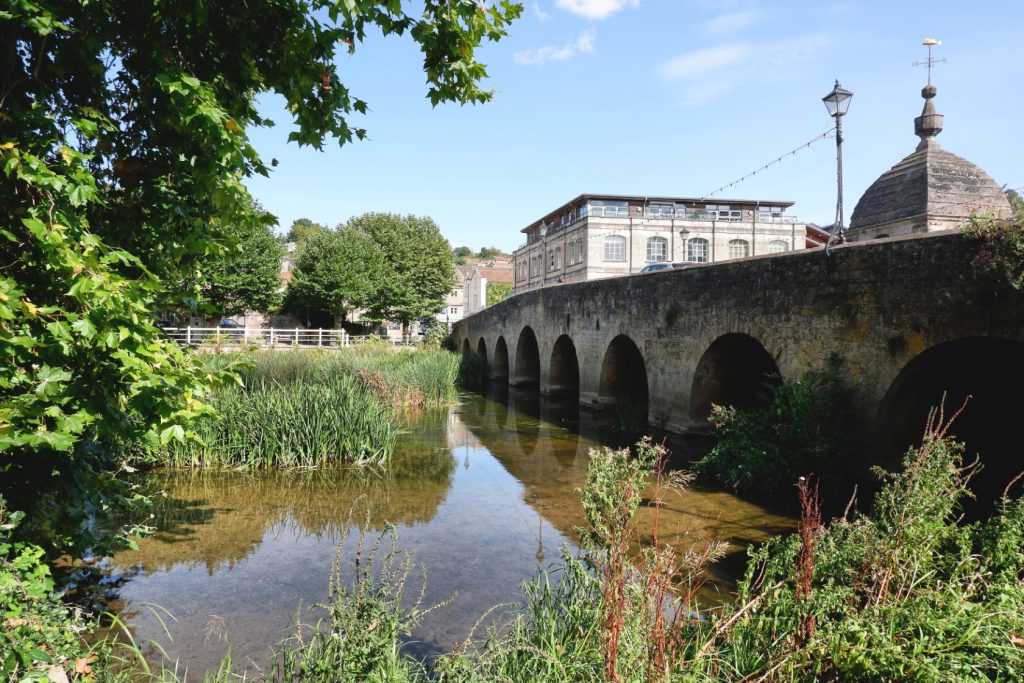
USEFUL LINKS
CAMPAIGNS
Bristol Campaign Against Tower Blocks – Tall buildings make no sense for Bristol
Bristol tall buildings recently built, permitted, or in planning – Matthew Montagu-Pollock | Bristol Commentary | 15.7.23
MATERIAL FOR YOU TO RESEARCH
Have a dive into these and let me know what you think:
Future of Cities – Bristol Cable
A Plan for Bristol to 2050 – Meetings, agendas, and minutes (PDF)